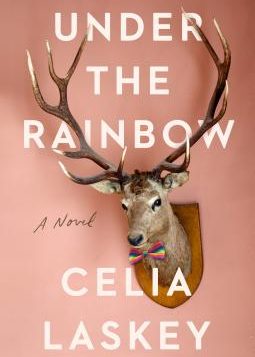IT WAS MEANT to be a grand social experiment. When Acceptance Across America (AAA) had finished collecting data, crunching the numbers, peering at social media posts, and examining other statistics, they announced their findings: Big Burr, Kansas, was the most homophobic, bigoted town in America. With a target community in sight, they now set out to ascertain whether this kind of bigotry could be turned around. To find out what it might take to change people’s minds, the organization sent a task force of LGBT individuals and their families to live and work in Big Burr for two years.
Such is the premise of this biting, feminist, somewhat humorous, but totally absorbing novel.
Billy Cunningham, testosterone-fueled high school bad-boy, makes sure that everybody knows his family’s stand on the newcomers. However, as the novel unfolds, readers become aware that Billy doesn’t know a fraction of what’s going on in his own household. Still, he holds the key to one of this novel’s most powerful scenes involving fifteen-year-old Avery, the daughter of the task force’s lesbian lead, who walks a fine line between supporting her mother and wanting desperately to be just an average kid. On this note—and because of the young age of many of the characters in this novel—readers may occasionally (and incorrectly) think that this book is meant solely for a young audience.
While it is true that the native townsfolk are authentic and familiar, if not a bit stereotypical, the other half of this novel—perhaps even the better half—consists of first-person point-of-view observations from the Acceptance Across America activists: Harley, who is transitioning and who endures the most heartbreakingly hateful action of anyone; Karen, who is outspoken and fiercely feminist; and Tegan, who’s with AAA as work for her master’s degree and who serves as a counselor for the townspeople and a touchstone for the story. Their townsfolk allies, Lizzie, Linda, and Zach, gently push Big Burrians to a position of greater acceptance, or at least tolerance, of their new neighbors.
Another important moment in the book comes in a coda that ties up many loose strings, even as it leaves a big one dangling in the form of a last-minute character who hasn’t been present but who seems, in retrospect, to have haunted the story unseen. Just what this character has been up to all this time is a question you may raise upon completing this wonderfully complex novel.
Terri Schlichenmeyer is a freelance writer based in Wisconsin.







